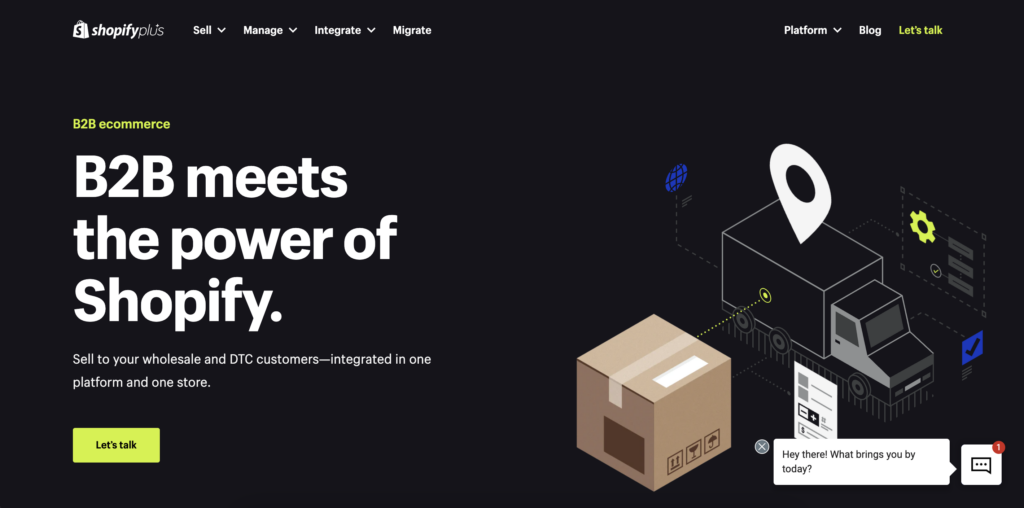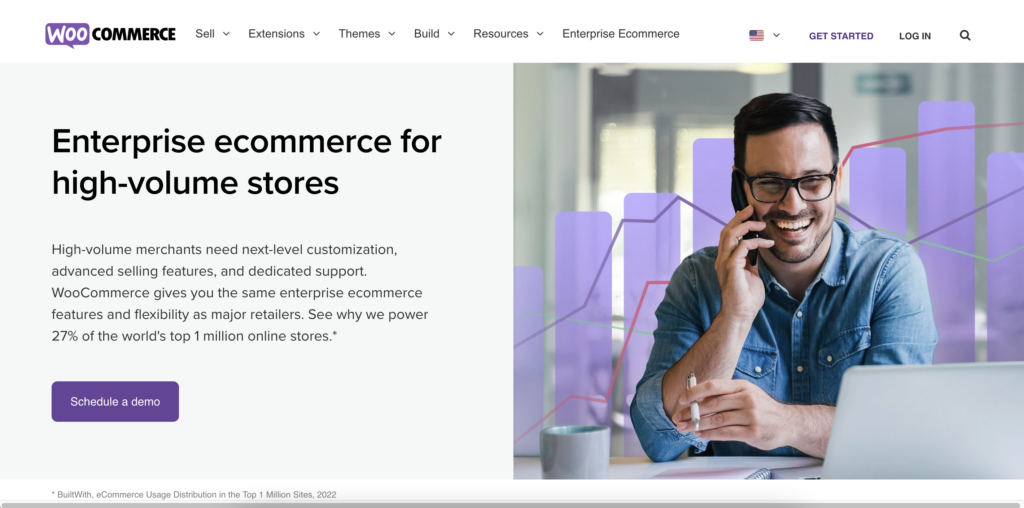According to one study, 81% of B2B buyers in New Zealand, Southeast Asia, and India “expect a consumer-grade digital experience” from B2B websites. Customers want an always-on, personalized omnichannel experience. And this is a huge challenge and opportunity for all manufacturers, distributors, or brands in B2B ECommerce Marketplace.
It’s time to rethink the Rise of the B2B eCommerce Marketplace.
1. The Rise of B2B Ecommerce Services
According to a report by Forrester (B2B E-Commerce Forecast 2022, USA), we will see historically comparable growth off a base that came two years earlier than expected. They once forecast that US B2B eCommerce will reach $1.8 trillion and account for 17% of total B2B sales in the US in 2023. With a compound annual growth rate (CAGR) of 10% for B2B E-commerce to die in the next 5 years. COVID-19 ended a year later. By the end of 2021, B2B e-commerce had reached the $1.7 trillion mark.
This number is really impressive. And by 2022, Forrester further estimates that by 2027, US B2B e-commerce will reach $3 trillion (CAGR of 10%) and account for 24% of all US B2B sales in commerce. B2B e-commerce in the next 5 years.

This article will tell you an eye-opening story of what will happen in the next five years.
2. B2B ECommerce Trends and Challenges for B2B companies
The Rise of the B2B eCommerce Marketplace presents companies with many opportunities along with new challenges.
The first challenge is to reach their customers directly without conflicting channels. Along with the growth of eCommerce, B2B sellers are starting to move from one-to-many to many-to-many without conflict.
Not only that, B2B companies are also facing many difficulties in management. Manage connections between channels; manage product data, inventory, and orders of each channel; …
For B2B companies that want to stand out in the market, it is imperative to implement a comprehensive market strategy. These strategies aim to re-price, optimize product and supply data, help with advertising, and analytics, and connect with shipping and fulfillment partners.
And finally, the biggest challenge for B2B companies is how to choose the most suitable platform to promote their products.
3. B2B marketplaces are shaping the future of B2B eCommerce
3.1 What Customers Are Expecting From B2B eCommerce?
A study that surveyed nearly 3,500 decision-makers in 12 markets found that what customers want from B2B is “more”—more channels, more convenience, and a more personalized experience. And all those desires are focused on the e-commerce market.
Undeniably, the market plays a very important role in the process of B2B economic growth. And the rise of the B2B E-Commerce Market is inevitable. All B2B customers love the e-commerce marketplace. No exception. Because there, their user experience is optimized, safe and secure. This is also the time when B2B customers are more willing to switch providers than ever for the best experience.
3.2 Why are marketplaces so important to B2B now?

Derived from consumer behavior. B2B buyers are tending to buy just like B2C consumers.
And the fact is, successful B2B companies today are the ones that succeed in providing great experiences for consumers. Those positive reactions come from the consistency of product content across all channels, the buying process, easy checkout, and the option to ship anywhere. And the B2B E-commerce Marketplace has it all.
For example: Back in the day, B2B shoppers simply called a sales rep and logged into the proprietary portal to make a purchase. Now they can easily find supplier information through google, websites, and especially the e-commerce market, such as Amazon Business, … This helps them have many options as well is easier to scale up.
3.3 The role of the B2B Ecommerce Marketplace
With that said, the biggest challenge B2B businesses are facing is finding the most consistent and effective platform. And Marketplace is exactly what they need right now.
With Marketplace, B2B sellers can manage all their product catalogs, and inventory data, provide logistics, and direct customer care at no additional cost to the manufacturer. In particular, they can also easily collect customer data to predict and make future business decisions.
On the side of B2B buyers, they get a seamless experience from researching and researching products to finding distributors and finally buying. All in just one system that B2B eCommerce Marketplace.
4. Top B2B eCommerce Software For Multi-Vendor Marketplaces
4.1. Magento B2B Marketplace

Magento Commerce (Adobe Commerce) is a leading open-source platform of B2B eCommerce marketplace with over 300,000 users. Magento commerce has 2 versions: Free Community Edition and Paid Adobe Commerce. Of course, the Adobe Commerce version will provide more advanced features than the free version.
The reason B2B companies should choose Magento B2B Marketplace is because of top security as well as unlimited customization of solutions. Adobe Commerce allows you to create an optimized B2B e-commerce website that includes search engines, promotions, simple checkout, and more, catering to the specific needs of your B2B customers. Not only that, you can also easily manage the system from product catalogs, visual reports, custom price lists, multilingual systems, sales channels, countries, and custom pricing.. . easily connect to mobile apps and IoT via API.
Magento B2B Marketplace customers such as HP, Liebherr, FoodServiceDirect.com…
However, building a Magento website is not simple and costs a lot. You should consider choosing the leading agency in this field.
4.2. Shopify B2B Marketplace

Shopify B2B Marketplace (Shopify Plus) is a modern, flexible e-commerce platform that is great for both B2B and DTC companies.
What makes this platform special is that it provides a personalized buying experience. The store will be run based on the user. For example, with B2B customers, product prices will be displayed based on personal data such as: Who they are? What is the quantity and type of goods they buy? From there, set up a quote and discount for that customer.
With Shopify Plus, you can manage both orders and inventory on one central platform. You can also integrate it with other systems like enterprise resource planning (ERP) and content management systems (CMS)…
Companies using Shopify Plus like Beard & Blade, Laird Superfood, and Death Wish Coffee
Shopify B2B marketplace has an extremely easy and simple user interface. It is suitable for everyone.
4.3. Woocommerce B2B Marketplace

WooCommerce B2B Marketplace is an open-source e-commerce platform for WordPress websites. And if WordPress is your favorite CMS, then WooCommerce is just what you need to grow your B2B store.
It works like a WordPress plugin. With Woocommerce, you will easily create and maintain an online B2B store with full features such as purchase, payment, shipping, management, etc.
Not only that, you can also easily organize your customers into custom groups. You can show or hide product price, quantity, discount, payment option or shipping method, etc. for each group.
In particular, you can create different pages to register for different groups. From there, set up customizations such as the minimum and maximum purchase quantity for each customer group. And you are free to allow or deny the customers who buy your products.
5. Last Words
It can be seen that the multi-channel centralized e-commerce platform is exploding stronger than ever. Not only does it help you scale up your sales quickly and efficiently, but it also helps you operate your business model optimally.
After the impact of COVID, there have been too many changes in buyer expectations and behavior, especially for B2B. So, in order to survive, you need to make a difference to yourself today. Delivering more value to your customers and adopting the right business model will help you become a pioneer in the rise of the B2B eCommerce Marketplace.



